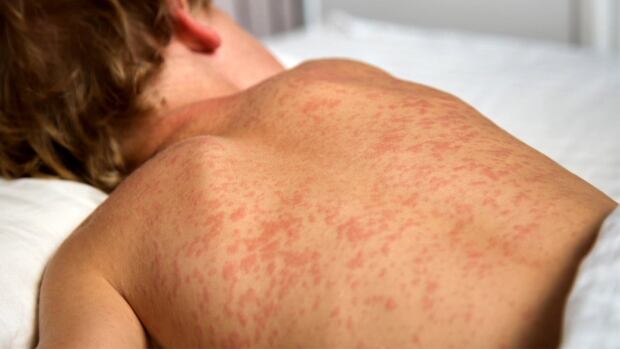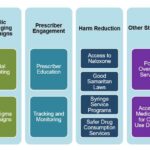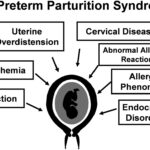Measles is a highly contagious viral illness caused by the Measles morbillivirus, known for its airborne transmission and rapid outbreak potential. Despite being vaccine-preventable, measles continues to pose significant global health risks, particularly in populations with low immunization coverage. Understanding the dynamics of exposure and implementing robust preventive strategies is crucial in reducing infection rates.

How Measles Spreads: Transmission Mechanisms
Measles is transmitted through respiratory droplets and airborne particles when an infected individual coughs or sneezes. The virus remains viable in the air and on surfaces for up to two hours, contributing to its exceptional infectivity.
Key Transmission Facts:
- The basic reproduction number (R₀) ranges from 12 to 18, making measles more contagious than influenza.
- Infectious period begins four days before rash onset and lasts up to four days afterward.
- Up to 90% of susceptible individuals in close proximity to an infected person will contract measles if unprotected.
Populations at Increased Risk of Measles Exposure
1. Unvaccinated Individuals
The most significant risk group includes those who have not received the measles-mumps-rubella (MMR) vaccine. This includes:
- Infants under 12 months (too young for vaccination)
- Individuals with vaccine hesitancy or access barriers
- Adults lacking documented immunity
2. Immunocompromised Patients
Those undergoing chemotherapy, organ transplant recipients, or individuals with immunodeficiency disorders have diminished resistance to infection and are at high risk for severe complications.
3. Healthcare and Travel-Related Exposure
- Healthcare workers without verified immunity may contract measles from patients.
- International travelers visiting countries with endemic or outbreak-level measles activity are vulnerable.
Measles Outbreak Settings: When and Where Risk Escalates
Outbreaks typically emerge in communities with:
- Low MMR vaccination coverage (<95%)
- High population density
- Frequent international travel or immigration from measles-endemic areas
Outbreak clusters are often linked to:
- Schools and universities
- Religious or cultural communities with low vaccine uptake
- Refugee camps or displaced populations
Symptoms That Signal Possible Exposure
Early identification of measles symptoms is essential for containing potential spread.
Prodromal Phase (2–4 days):
- High fever (up to 40°C)
- Cough
- Coryza (runny nose)
- Conjunctivitis (red eyes)
- Koplik spots (white lesions in the oral mucosa)
Exanthem Phase:
- Erythematous maculopapular rash, spreading from face to trunk and limbs
Individuals are highly contagious during both phases, often before a diagnosis is confirmed.
Measles Immunity and Protection Strategies
MMR Vaccination
Vaccination remains the cornerstone of measles prevention.
- 1st Dose: Given at 12–15 months
- 2nd Dose: Administered at 4–6 years
Effectiveness:
- One dose: ~93% effective
- Two doses: ~97% effective
Post-Exposure Prophylaxis (PEP)
For unvaccinated individuals:
- MMR Vaccine: Effective if administered within 72 hours post-exposure
- Immune Globulin (IG): Recommended within 6 days for high-risk individuals
Community-Level Protection
- Herd Immunity Threshold: >95% vaccine coverage needed to interrupt transmission
- School and workplace policies: Enforcing immunization requirements helps prevent outbreaks
Mitigating Exposure Risk During Outbreaks
Infection Control Measures
- Immediate isolation of suspected or confirmed cases
- Airborne precautions in healthcare settings (N95 respirators, negative pressure rooms)
- Contact tracing to identify and inform exposed individuals
Travel Advisories and Pre-travel Vaccination
- CDC and WHO recommend all international travelers ensure full MMR immunization
- Travel clinics should verify immunity status and update vaccinations accordingly
Monitoring and Surveillance
Robust surveillance systems are key to minimizing measles exposure risks.
- Case Reporting: All suspected cases should be reported to public health authorities immediately
- Genotyping: Helps track the origin and spread of outbreaks
- Vaccination audits: Identify coverage gaps at community and national levels
Global and National Trends in Measles Risk
Despite substantial progress, measles outbreaks have re-emerged in regions with previously high vaccination rates due to vaccine misinformation, supply chain disruptions, and civil unrest.
Notable Trends:
- Europe and the United States have seen periodic surges in measles cases linked to importation and localized vaccine refusal.
- Africa and Southeast Asia continue to experience endemic transmission, particularly in underserved areas.
The risk of measles exposure remains a pressing concern in both developed and developing nations. Vigilant vaccination strategies, rapid outbreak response, and public education are indispensable to maintaining measles elimination status and preventing resurgence. As global mobility increases, so too must our collective efforts to reduce vulnerability through science-backed, community-wide prevention.

